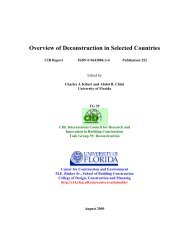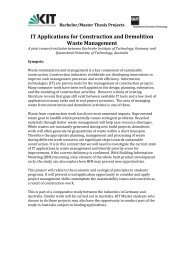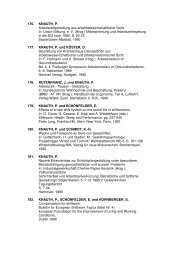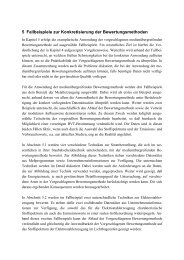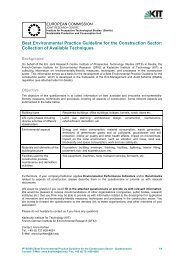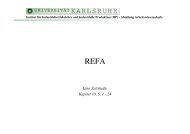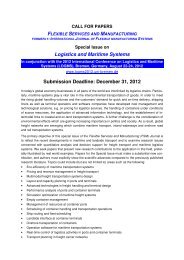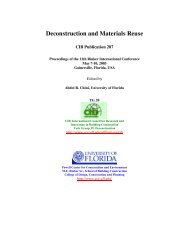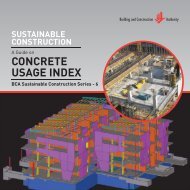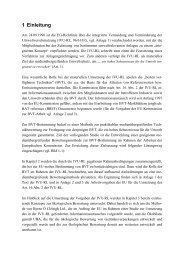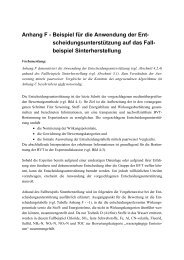Waste reduction final report -4 - Test Input
Waste reduction final report -4 - Test Input
Waste reduction final report -4 - Test Input
Create successful ePaper yourself
Turn your PDF publications into a flip-book with our unique Google optimized e-Paper software.
STRATEGIC THRUST 5: Setting minimum standards through legislative<br />
requirements<br />
Legislative requirements remain fundamental in determining the advancement of new<br />
methods and materials. In 2008, BCA required all demolition contractors to declare the<br />
estimated quantity of demolition waste, as part of the conditions of the permit to commence<br />
demolition work. Further in 2008, BCA adopted the local equivalent of BS EN 12620:<br />
Specification for Aggregates for Concrete, which has provisions for the use of manufactured<br />
and recycled concrete aggregates. The recognition of the new Standard is crucial for<br />
providing guidelines to the industry on the performance of new construction materials from<br />
non-natural sources.<br />
To encourage recovery of higher quality recycled materials, a Demolition Protocol for<br />
Resource Recovery was incorporated into the local Code of Practice for Demolition or SS<br />
557 since 2010. The Demolition Protocol is a set of procedures on how demolition wastes<br />
should be managed on-site to maximise resource recovery for beneficial reuse and recycling.<br />
It aims to produce cleaner demolition waste to a quality acceptable for waste recyclers to<br />
produce high quality Recycled Concrete Aggregates (RCA). The protocol consists of the<br />
following:<br />
- Pre-Demolition Audit<br />
Pre-Demolition Audit enables the quantity of recyclable and non-recyclable materials such as<br />
concrete and bricks respectively to be identified on different parts of a building. The level of<br />
material segregation and the required demolition sequence are pre-determined before the<br />
actual demolition for better planning and on-site management. Resource recovery target is<br />
also established.<br />
- Sequential Demolition<br />
The demolition process is separated into phases in which individual materials are carefully<br />
dismantled one step at a time and salvaged for reuse and recycling. The wastes generated in<br />
each dismantling stage should be of similar type and nature such that contamination by nonrecyclable<br />
items can be significantly reduced. The sequence of demolition is principally<br />
carried out in reverse order to the construction process.<br />
- On-site Sorting<br />
For demolition wastes to have meaningful applications, it is vital that the wastes are properly<br />
managed and stored separately on site to avoid cross-contamination of wastes. Once the<br />
demolition wastes have been properly separated, they can be channelled to appropriate<br />
recycling facilities for further processing into useable products.<br />
Legislation on Construction and Demolition <strong>Waste</strong><br />
Singapore has elaborate laws on waste and its management including C&D waste. The major<br />
statutes are found on the Environmental Public Health (Amendment) Act 2008 by the<br />
National Environment Agency (NEA) to minimize and recycle waste as necessary to be<br />
sustainable. For example, there is a compulsory requirement for waste to be carted from sites<br />
60



